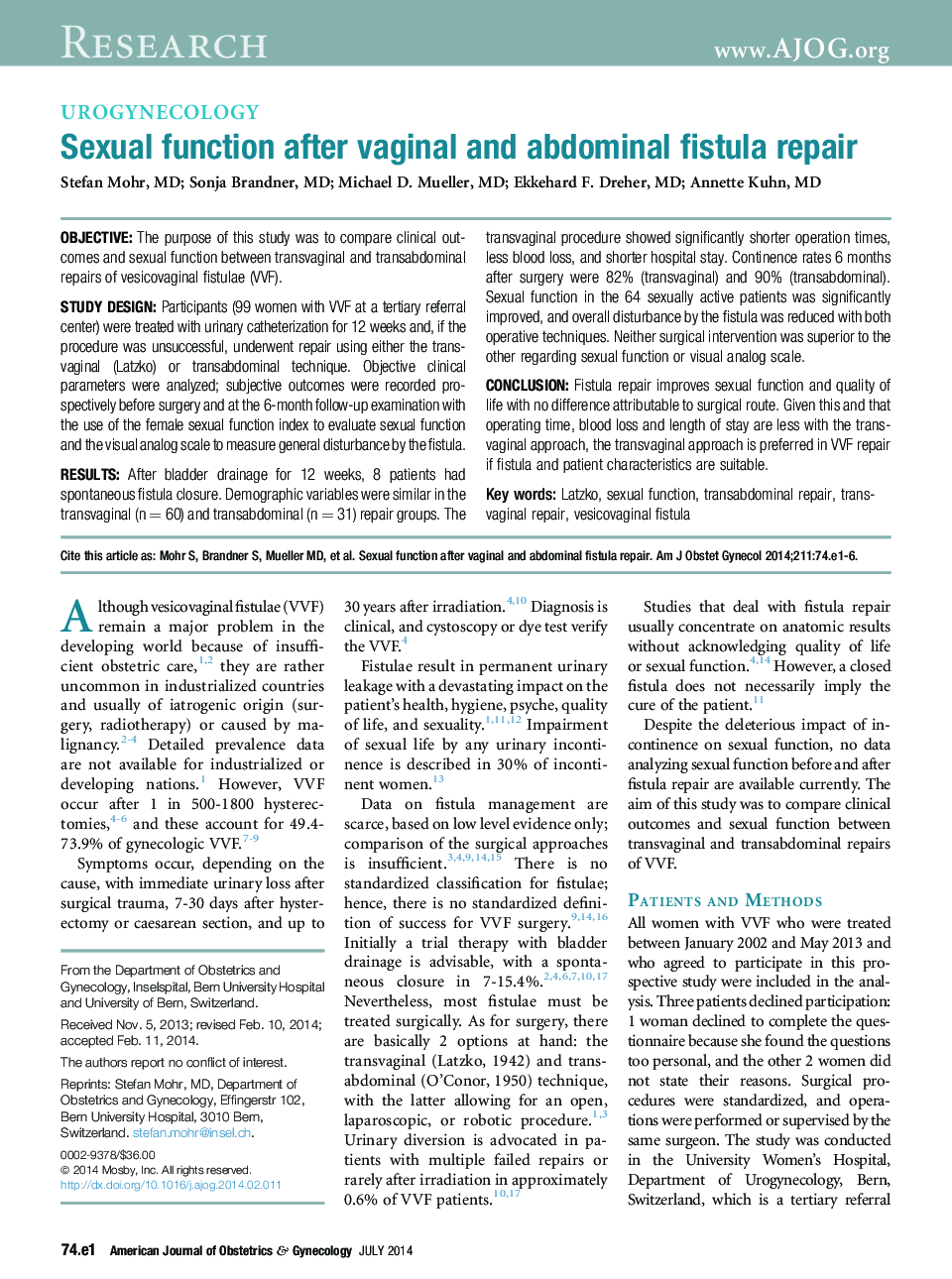| Article ID | Journal | Published Year | Pages | File Type |
|---|---|---|---|---|
| 6144937 | American Journal of Obstetrics and Gynecology | 2014 | 6 Pages |
ObjectiveThe purpose of this study was to compare clinical outcomes and sexual function between transvaginal and transabdominal repairs of vesicovaginal fistulae (VVF).Study DesignParticipants (99 women with VVF at a tertiary referral center) were treated with urinary catheterization for 12 weeks and, if the procedure was unsuccessful, underwent repair using either the transvaginal (Latzko) or transabdominal technique. Objective clinical parameters were analyzed; subjective outcomes were recorded prospectively before surgery and at the 6-month follow-up examination with the use of the female sexual function index to evaluate sexual function and the visual analog scale to measure general disturbance by the fistula.ResultsAfter bladder drainage for 12 weeks, 8 patients had spontaneous fistula closure. Demographic variables were similar in the transvaginal (n = 60) and transabdominal (n = 31) repair groups. The transvaginal procedure showed significantly shorter operation times, less blood loss, and shorter hospital stay. Continence rates 6 months after surgery were 82% (transvaginal) and 90% (transabdominal). Sexual function in the 64 sexually active patients was significantly improved, and overall disturbance by the fistula was reduced with both operative techniques. Neither surgical intervention was superior to the other regarding sexual function or visual analog scale.ConclusionFistula repair improves sexual function and quality of life with no difference attributable to surgical route. Given this and that operating time, blood loss and length of stay are less with the transvaginal approach, the transvaginal approach is preferred in VVF repair if fistula and patient characteristics are suitable.
